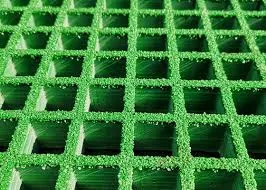
-
 Afrikaans
Afrikaans -
 Albanian
Albanian -
 Amharic
Amharic -
 Arabic
Arabic -
 Armenian
Armenian -
 Azerbaijani
Azerbaijani -
 Basque
Basque -
 Belarusian
Belarusian -
 Bengali
Bengali -
 Bosnian
Bosnian -
 Bulgarian
Bulgarian -
 Catalan
Catalan -
 Cebuano
Cebuano -
 China
China -
 China (Taiwan)
China (Taiwan) -
 Corsican
Corsican -
 Croatian
Croatian -
 Czech
Czech -
 Danish
Danish -
 Dutch
Dutch -
 English
English -
 Esperanto
Esperanto -
 Estonian
Estonian -
 Finnish
Finnish -
 French
French -
 Frisian
Frisian -
 Galician
Galician -
 Georgian
Georgian -
 German
German -
 Greek
Greek -
 Gujarati
Gujarati -
 Haitian Creole
Haitian Creole -
 hausa
hausa -
 hawaiian
hawaiian -
 Hebrew
Hebrew -
 Hindi
Hindi -
 Miao
Miao -
 Hungarian
Hungarian -
 Icelandic
Icelandic -
 igbo
igbo -
 Indonesian
Indonesian -
 irish
irish -
 Italian
Italian -
 Japanese
Japanese -
 Javanese
Javanese -
 Kannada
Kannada -
 kazakh
kazakh -
 Khmer
Khmer -
 Rwandese
Rwandese -
 Korean
Korean -
 Kurdish
Kurdish -
 Kyrgyz
Kyrgyz -
 Lao
Lao -
 Latin
Latin -
 Latvian
Latvian -
 Lithuanian
Lithuanian -
 Luxembourgish
Luxembourgish -
 Macedonian
Macedonian -
 Malgashi
Malgashi -
 Malay
Malay -
 Malayalam
Malayalam -
 Maltese
Maltese -
 Maori
Maori -
 Marathi
Marathi -
 Mongolian
Mongolian -
 Myanmar
Myanmar -
 Nepali
Nepali -
 Norwegian
Norwegian -
 Norwegian
Norwegian -
 Occitan
Occitan -
 Pashto
Pashto -
 Persian
Persian -
 Polish
Polish -
 Portuguese
Portuguese -
 Punjabi
Punjabi -
 Romanian
Romanian -
 Russian
Russian -
 Samoan
Samoan -
 Scottish Gaelic
Scottish Gaelic -
 Serbian
Serbian -
 Sesotho
Sesotho -
 Shona
Shona -
 Sindhi
Sindhi -
 Sinhala
Sinhala -
 Slovak
Slovak -
 Slovenian
Slovenian -
 Somali
Somali -
 Spanish
Spanish -
 Sundanese
Sundanese -
 Swahili
Swahili -
 Swedish
Swedish -
 Tagalog
Tagalog -
 Tajik
Tajik -
 Tamil
Tamil -
 Tatar
Tatar -
 Telugu
Telugu -
 Thai
Thai -
 Turkish
Turkish -
 Turkmen
Turkmen -
 Ukrainian
Ukrainian -
 Urdu
Urdu -
 Uighur
Uighur -
 Uzbek
Uzbek -
 Vietnamese
Vietnamese -
 Welsh
Welsh -
 Bantu
Bantu -
 Yiddish
Yiddish -
 Yoruba
Yoruba -
 Zulu
Zulu
frp fittings
Understanding FRP Fittings The Key to Durable and Efficient Infrastructure
Fiber Reinforced Polymer (FRP) fittings are gaining attention in various industries due to their outstanding properties and benefits. These fittings, commonly composed of a polymer matrix reinforced with fibers, are revolutionizing the way we think about construction, infrastructure, and piping systems. With remarkable strength-to-weight ratios and corrosion resistance, FRP fittings are a game changer for many applications.
Understanding FRP Fittings The Key to Durable and Efficient Infrastructure
Corrosion resistance is another critical benefit of FRP fittings. Many industries, particularly those dealing with chemicals and wastewater, face the constant threat of corrosion and degradation. Unlike metal fittings that rust and corrode, FRP fittings maintain their integrity over time, even in harsh environments. This resistance extends the lifecycle of the fittings and reduces maintenance costs significantly, allowing industries to allocate resources more efficiently.
frp fittings

The versatility of FRP fittings allows for their application in various settings. They can be found in industries such as oil and gas, pharmaceuticals, water treatment, and even in the construction of bridges and buildings. Their adaptability to different shapes and sizes makes them suitable for a multitude of piping configurations. Customization options further enhance their usability, enabling engineers and architects to design solutions that fit specific project needs.
In terms of environmental impact, FRP fittings offer numerous advantages. The production process for FRP materials is often more sustainable compared to traditional materials. Additionally, their durability means a longer lifespan, which translates into less waste and lower environmental footprint. Companies are increasingly recognizing the benefits of using FRP materials as a way to enhance their sustainability profiles.
However, it is essential to consider installation and compatibility with existing systems. Not all FRP fittings are the same, and choosing the right type is crucial for ensuring performance. Collaboration between engineers, suppliers, and end-users is key in selecting the appropriate fittings for each unique application.
In conclusion, FRP fittings represent a significant advancement in material technology, offering numerous benefits such as lightweight structure, corrosion resistance, versatility, and environmental sustainability. As industries continue to innovate and seek more efficient solutions, the use of FRP fittings will likely grow, solidifying their place as a cornerstone of modern infrastructure. Whether it’s for industrial applications or infrastructure projects, the adoption of FRP fittings promises enhanced performance and longer-lasting results.
Latest news
-
Exploring the Benefits of Top Hammer Drifter Rods for Enhanced Drilling PerformanceNewsJun.10,2025
-
High-Precision Fiberglass Winding Machine for GRP/FRP Pipe Production – Reliable & Efficient SolutionsNewsJun.10,2025
-
FRP Pipes & Fittings for Shipbuilding - Corrosion-Resistant & LightweightNewsJun.09,2025
-
Premium FRP Flooring Solutions Durable & Slip-ResistantNewsJun.09,2025
-
Premium Fiberglass Rectangular Tanks Durable & Lightweight SolutionNewsJun.09,2025
-
Tapered Drill String Design Guide Durable Performance & UsesNewsJun.09,2025









